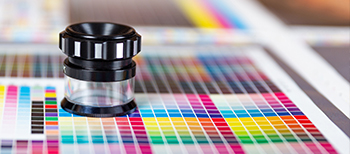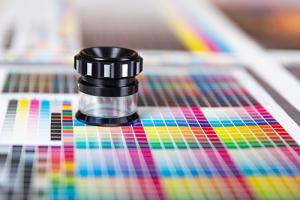Proofs are a vital part of the printing process, as they help to ensure that the printer and the end customer are in agreement about how the final product should look prior to the job being fully printed. These help to show any potential problems that could prevent the customers initial vision from being realised, and also help the printer to rectify these issues prior to going to print. The proofing process helps every member of the supply chain to ensure that everything is exactly right, avoiding any unnecessary aggravation or additional expense that could be caused by the need to reprint.

What is a Proof?
A proof is a representation of your artwork or logo design, typically in relation to the product that you intend to print it on. This is typically regarded as being a preliminary version of the printed product, showing a representation of how the finished product will look once printed. This can either be done with an online visual ‘mock-up’ or with a printed sample (otherwise known as a wet proof).
The type of proof that is used is often dependent on the purpose behind it. These can be separated into two formats, soft proofs and hard proofs. A soft proof refers to an low resolution electronic file, such as a PDF which is designed to be displayed on a computer monitor. These are made to simulate the appearance of the final product and are the most popular method of proofing due to them being quick and easy to send via email. Hard proofs can mean different things depending on the job or company. For us, these are made up of a digitally printed mockup of the desired printed project, as well as a digitally printed, high resolution, and colour-matched print to show any bleeds or margins. An example of this can be seen below with our Budget 2IMP Walker Umbrella and Durham Mug being mocked up for our customers. These are the most accurate form of proof as they allow the customer to view the design exactly as it will be.

Having a range of proof types available is important, not just from a financial perspective, but also when taking into account the range of materials and ease of printing onto them. Some materials may be more difficult to print on than others, or be more time consuming, and therefore it may be more time and cost effective to provide a PDF copy.
Types of Proofs
‘Soft’ and ‘hard’ proofs can be split into a variety of different methods.
PDF:
These are an electronic version of a proof that can be sent as an email attachment so that the customer is able to visually check the products appearance on screen. As a company, this is how we will normally provide proofs to our customers.
Digital:
Digital proofs are created using reprographics equipment instead of film. This kind of proof can only be produced using process colours, but they can be ideal for checking content and general design checks.
Cromalins:
These are proofs which are made using film and that are able to show accurate positioning and content and are typically used to check the registration of colours. These are created using a series of sheets (usually four) of photosensitive plastic, each of which is printed with a process colour. These are then exposed to a colour separation negative and are aligned with each other in the proper register.
Wet proofs:
A wet proof is a printed sample which is created directly from the printing plates onto the actual material. This is used to give an accurate representation of the final product using the correct process inks. Wet press proofs require the printer to be set up as if the whole job were to be printed, using both time and resources. This is the most expensive process and once it has been approved, must go to press again and accrue a second set of set up costs.











